You can sow dry corn seeds and expect them to sprout quickly. You'd get to harvest corn within eight weeks, but will this be the case if you replace dry corn seeds with fresh kernels? If you're wondering whether or not you can grow corn from fresh kernels, we have researched the question and have an answer below.
You can grow corn from fresh kernels. The success rate may be lower for fresh kernels, and it will vary by the kernel. Fresh kernels may begin to germinate within two days.
Now that you know that it is possible to grow corn from fresh kernels, your next question is probably how it is done. We will discuss the process in this post and give you tips on how to dry fresh corn seeds to make them suitable for growing corn.
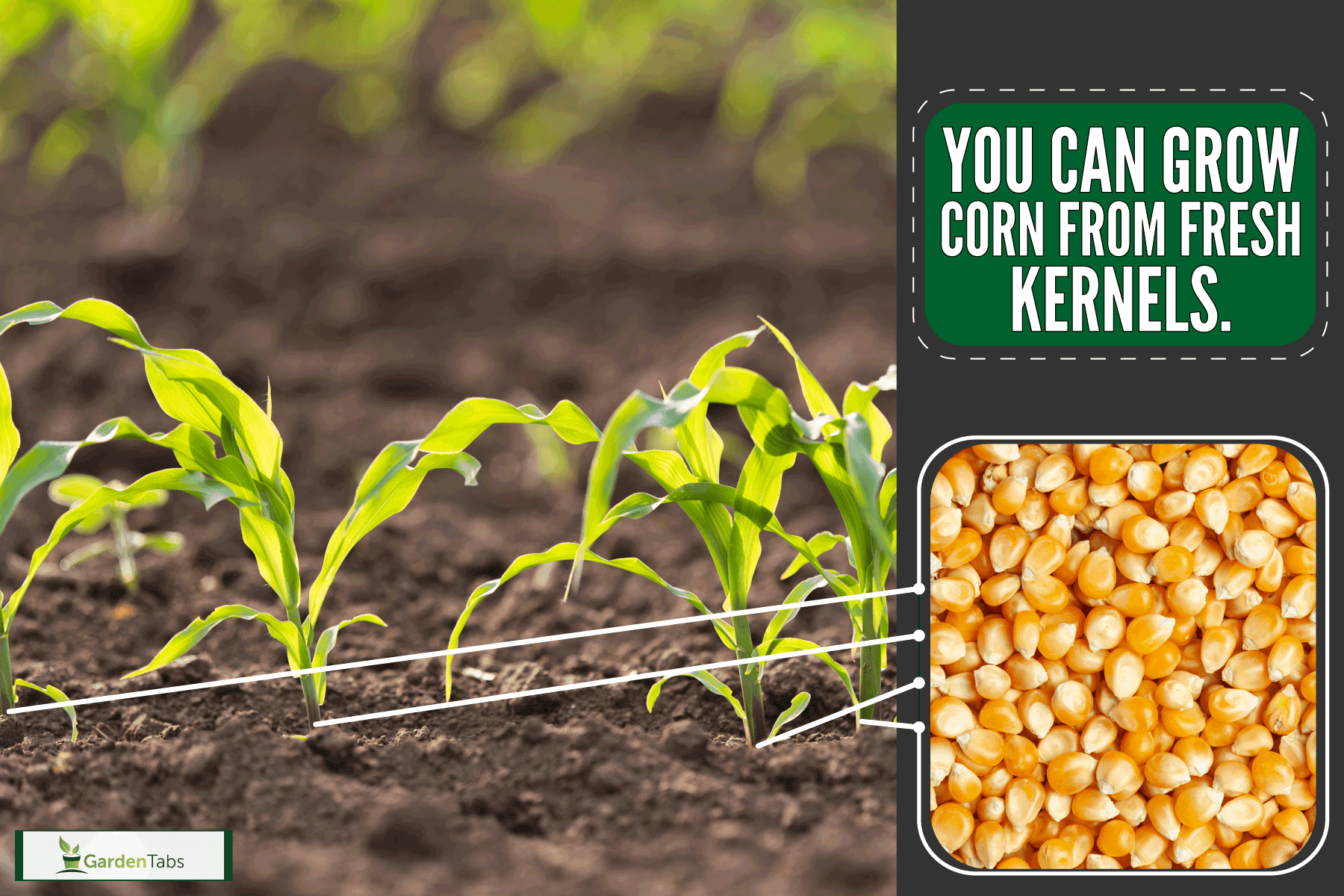
Can You Grow Corn From Fresh Kernels?
Kernel is the term used for a corn seed. In general, people use dry kernels to grow corn. That is the standard, but it does not mean that you cannot grow corn using fresh kernels.
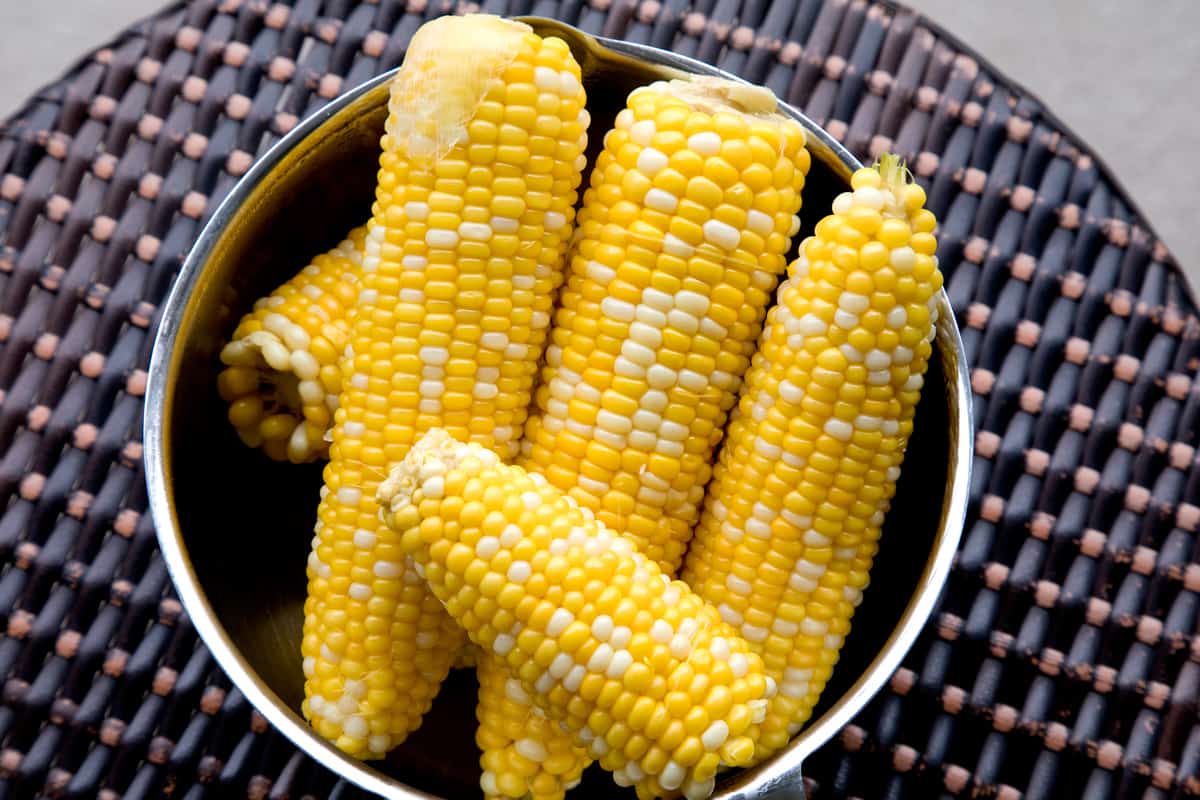
While many people would already agree that you can grow corn from fresh corn seeds, one experiment proved it to be true. A science activity for kids used four fresh kernels to test if they would grow sprouts and germinate successfully.
At the end of the experiment, one out of four kernels was able to develop as normal despite the presence of molds.
It will be easier to grow corn from fresh or dry kernels if you know a bit about them. So here is some basic information about corn kernels and growing corn.
Parts of a Kernel
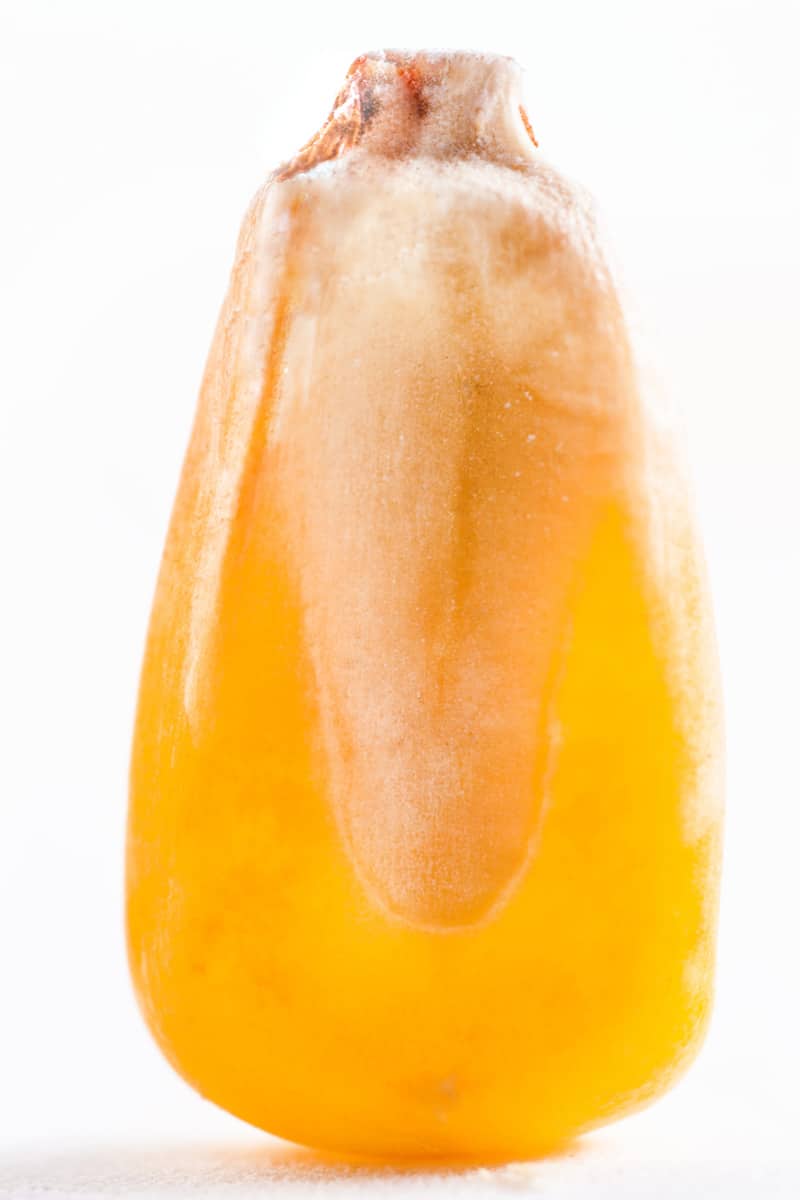
There are approximately 16 rows that hold around 800 kernels in an ear of corn. Each of these 800 kernels is corn seed. A corn seed has four main parts:
- tip cap
- endosperm
- pericarp
- germ
Tip Cap
The tip cap is the part of the kernel that serves as the entryway for water and nutrients. It is also the part that connects the corn kernel to the cob.
Endosperm
A kernel will germinate successfully with the help of starch and protein. Amazingly, it has its own source stored in the endosperm.
Pericarp
The pericarp is the protective lining that seals the kernel. This cellulosic material protects the kernel from insects, molds, and microorganisms.
Germ
The germ is the kernel's embryo. This is where you would expect the sprout to come out.
Now that you know your kernel, it is also important that you understand the basic needs of corn. That way, the growing process will get easier, and you have better chances of increasing your yield as well.
Corn Care and Soil Requirements
When you plant corn under the most ideal conditions, you are likely to have more yield when the harvest season comes. This annual grows fast and is relatively easy to care for, but it will help if you know its needs. So, first, what kind of soil does corn need?
Corn needs to be planted in deep, healthy soil preferably a combination of loose and textured soil. It should have a pH level between 5.5 and 8.
Corn benefits a lot from soil that contains organisms. Therefore, it helps to enhance the corn with fertilizer and organic matter. Because corn needs plenty of water, especially during the germination period, choose soil that drains well, too.
As an annual, corn needs to be planted on a perfect schedule. This falls at least 2 weeks after the winter season, when the soil temperature reaches an average of 60 degrees Fahrenheit.
Aside from these soil requirements, corn needs lots of sunlight. It helps the plants grow faster as they improve their food production. Additionally, sunlight is vital in the grain fill process, the time they produce sugar and starch.
How to Grow Corn From Fresh or Dry Kernels
Now you know the basic needs of corn. You should also learn how to properly plant the kernels to sprout as many seeds as possible.
As mentioned earlier, it is recommended to use dry kernels to grow corn. In fact, the general recommendation for most seeds for sowing is that they should be dry, as fresh ones are prone to diseases and pests. Fresh seeds often rot even before they begin to sprout.
But if you happen to enjoy the vibe of experimenting or you just don't have enough time to dry your seeds, you can still proceed with fresh kernels.
Here are the steps to grow corn from kernels.
1. Prepare the soil.
Till the topsoil by hand or with a rotary tiller to at least 6 inches deep. Tilling does not only loosen up the soil but also helps discourage weed growth. Create rows of tilled soil but maintain at least 2.5 feet of space between each row.
View this cordless tiller cultivator on Amazon.
2. Enhance soil with fertilizer and compost.
Make sure your kernels will have sufficient nutrients before planting. To do that, cover the soil with compost that is no thicker than 2 inches. Next, add 1.5 pounds of fertilizer to every 50 sq. ft. plant bed. Use a 5-10-5 fertilizer when available.
3. Plant the kernels following proper spacing.
Plant the kernels to a depth of 2 inches but maintain a 12-inch gap between the holes. Water the soil up to 6 inches deep or as needed to keep it moist. Your kernels should begin to sprout after a week. Some may take 2 weeks to sprout.
4. Protect the seedlings.
Protect the sprouts from pests with a plant collar, or you may also set up a floating cover for protection against wind. You can remove these once the seedlings have grown five true leaves.
View this plastic seedling cover on Amazon.
Note: If you planted several kernels per hole, then you need to thin them once the seedlings are 2 inches tall. Thinning helps you select the healthiest crop and also ensures that all your corn plants receive sufficient nutrients and water from the soil.
Caring for the Corn Seedlings
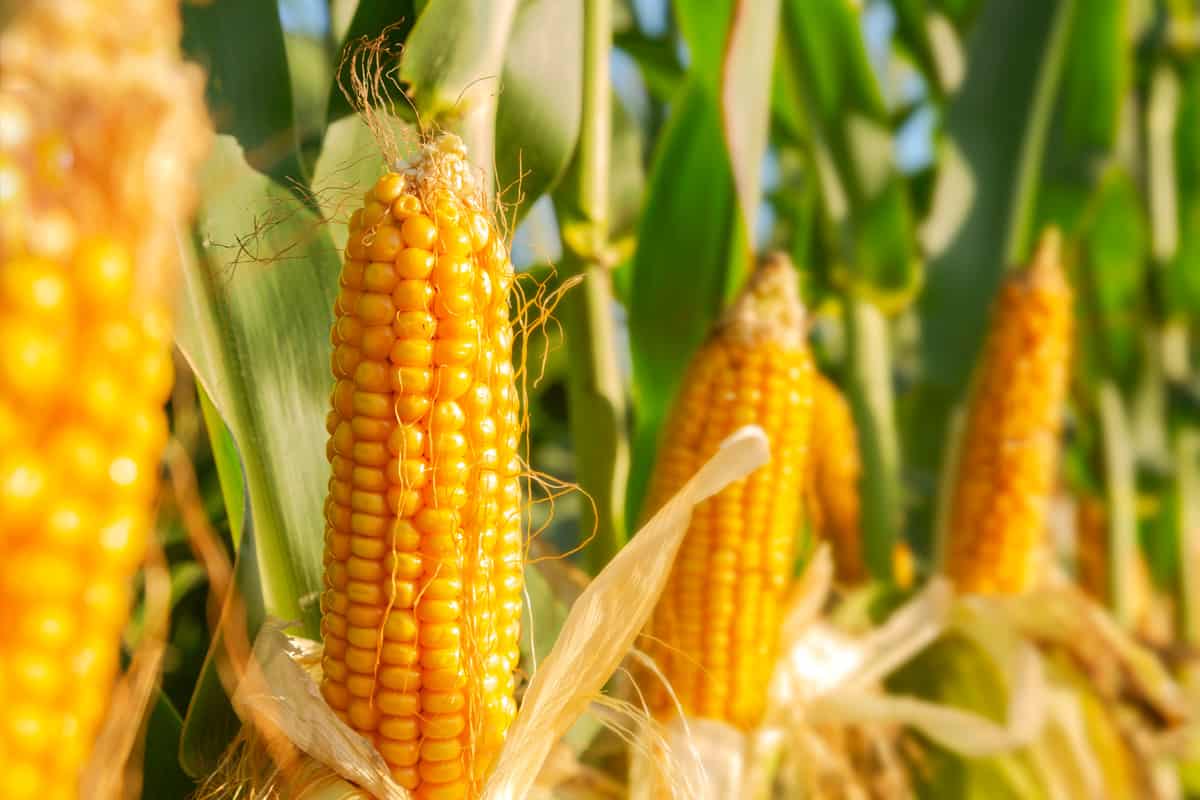
Water the corn seedlings as needed. Remember that the soil must always be moist. Layering the bed with mulch also helps retain moisture for longer. While moist soil is vital, you should also avoid overwatering your crop. Too much water suffocates the roots and leads to rotting.
The seedlings need additional supplements especially when they have consumed all their starch and sugar reserves. Sprinkle fertilizer when they have already grown at least 8 leaves.
Check your crops every once in a while as well. Watch out for signs of pest infestation and diseases. Remove affected parts as soon as possible to avoid spreading.
Hand pollination is also important for corn. Doing so helps avoid sterile stalks. Within 5 days from the time your corn has grown silk, you may shake the stalks.
The corn should be ready 24 days after the first emergence of silk. To know when the corn is ready and ripe, watch out for green husks and firm and moist corn kernels.
How to Dry Corn for Seed
Do not harvest all your corn if you intend to leave some to dry for seed. The corn must remain in the field for at least a month more. Wait for the husks to brown in color, which indicates that it is starting to dry.
Harvest the corn and expose the corn kernels but do not remove the husks completely. Use the husks to bind around four corn ears together. Hang the bunch to allow them to air dry. After 3 months, check the kernels for off-color seeds and remove them.
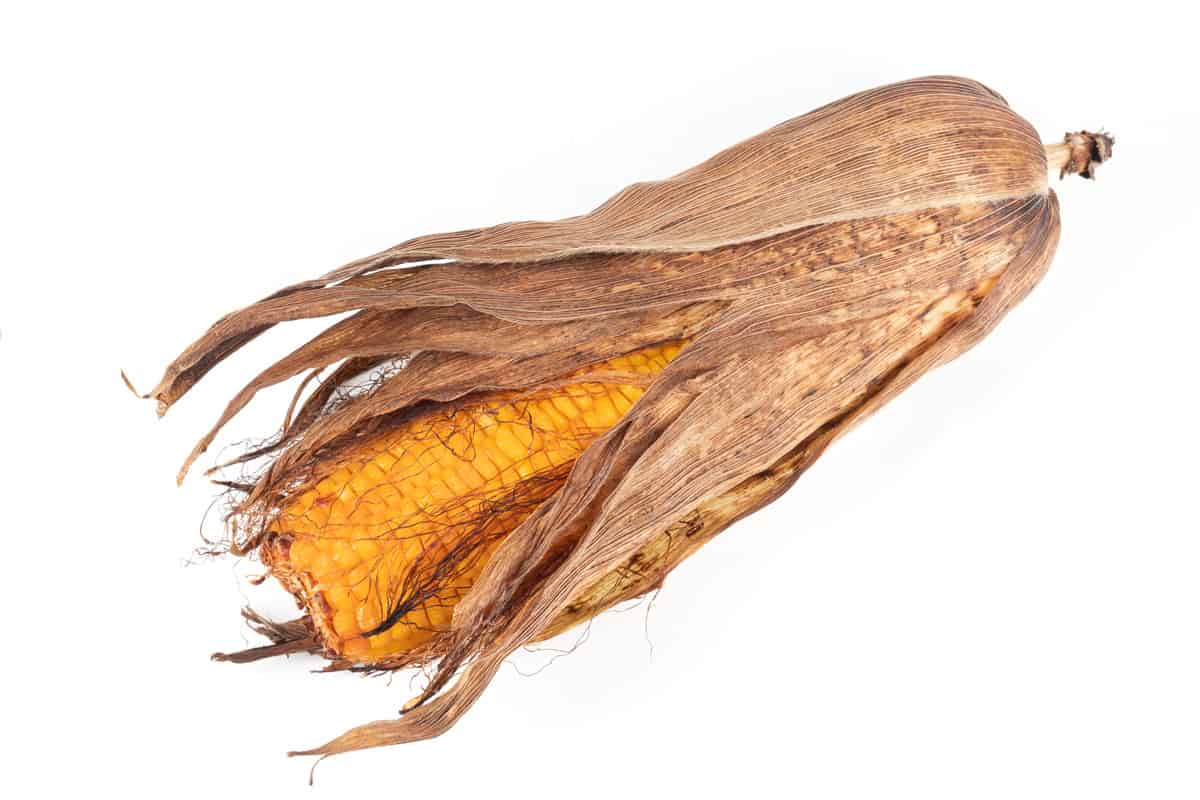
Shell the seeds from the cob and transfer them into a storage container. Store the container in a cool dry place. The kernels are now ready for the next planting season.
How to Check Corn Kernels for Dryness
Dry corn kernels should look wrinkled. They should not be moist at all. To test for dryness, the kernels should crumble when hammered. Otherwise, you need to extend the drying time.
Can You Grow Corn From the Grocery Store?
It is possible to grow corn from the grocery store kernels. The corn may not be as flavorful though, because corn from the grocery store is intended for making popcorn. You may need to use some seasonings and flavor enhancers for corn grown from grocery store kernels.
Final Thoughts
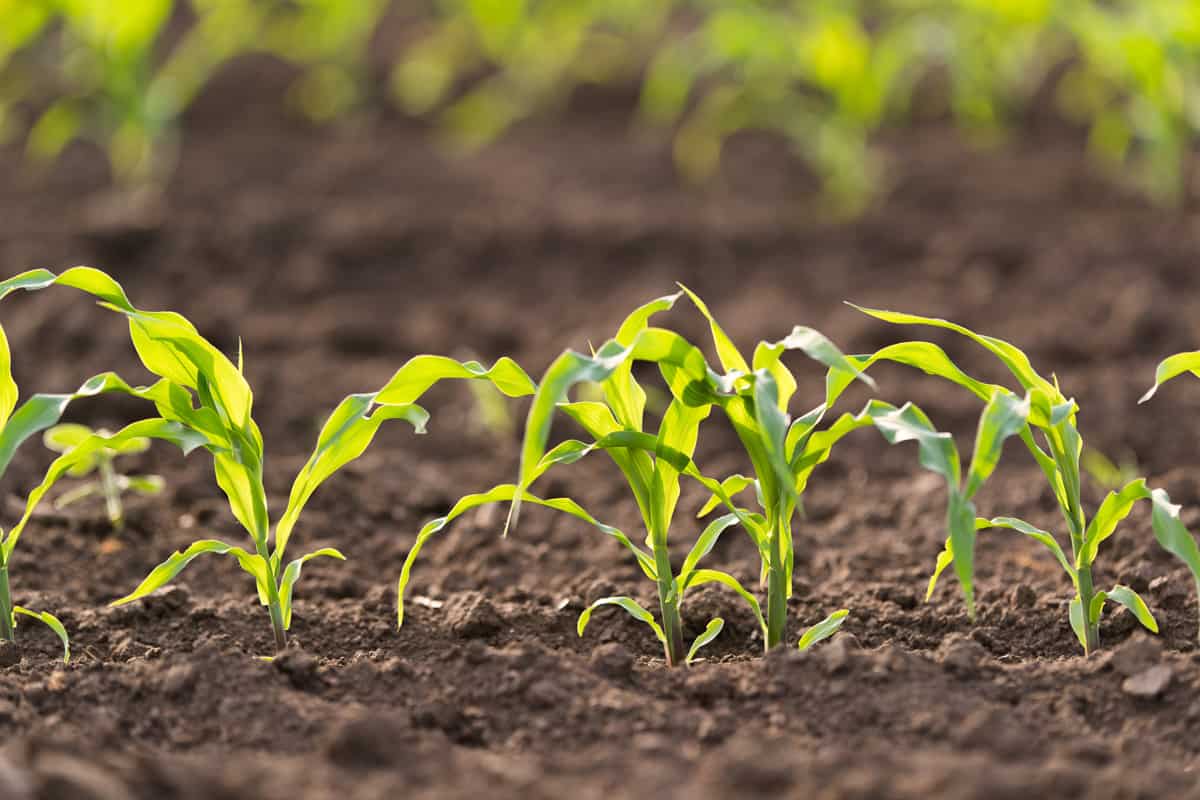
You can plant corn using fresh kernels, but it is likely that not all of the kernels will sprout. It's more difficult to grow corn from fresh kernels, as they have high chances of molding and rotting.
Fresh corn seeds are also attractive to pests. While it is possible, you may also dry the kernels first using our tips above before planting.
Is this post helpful? We have other posts related to this topic:


